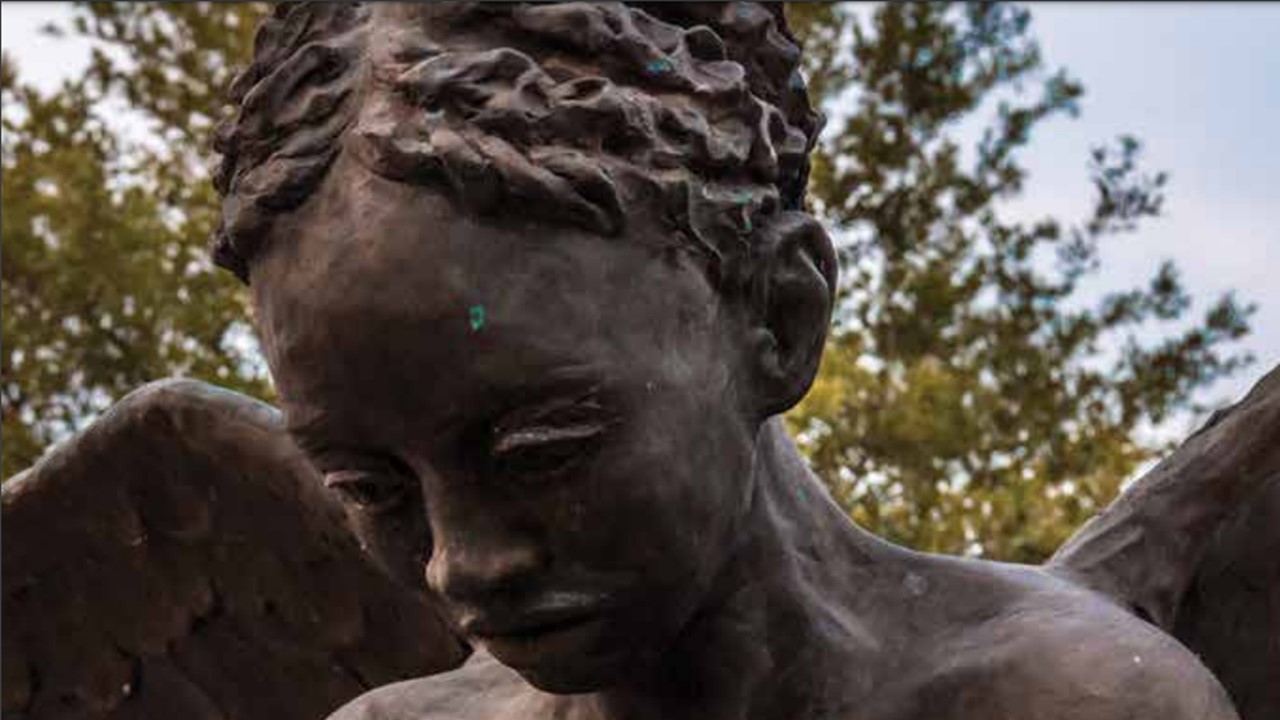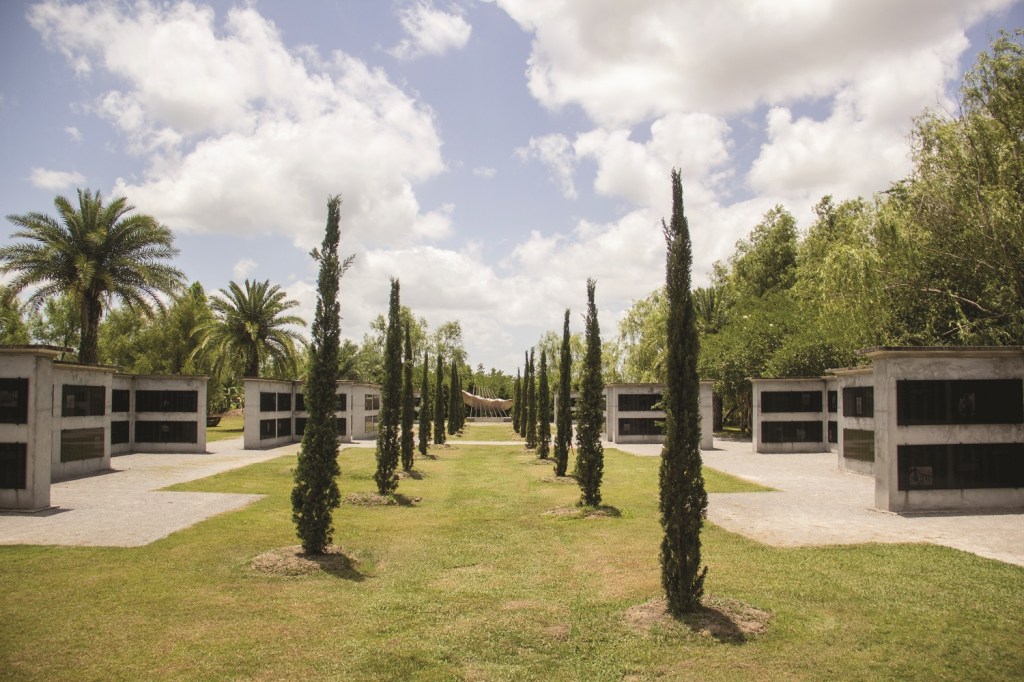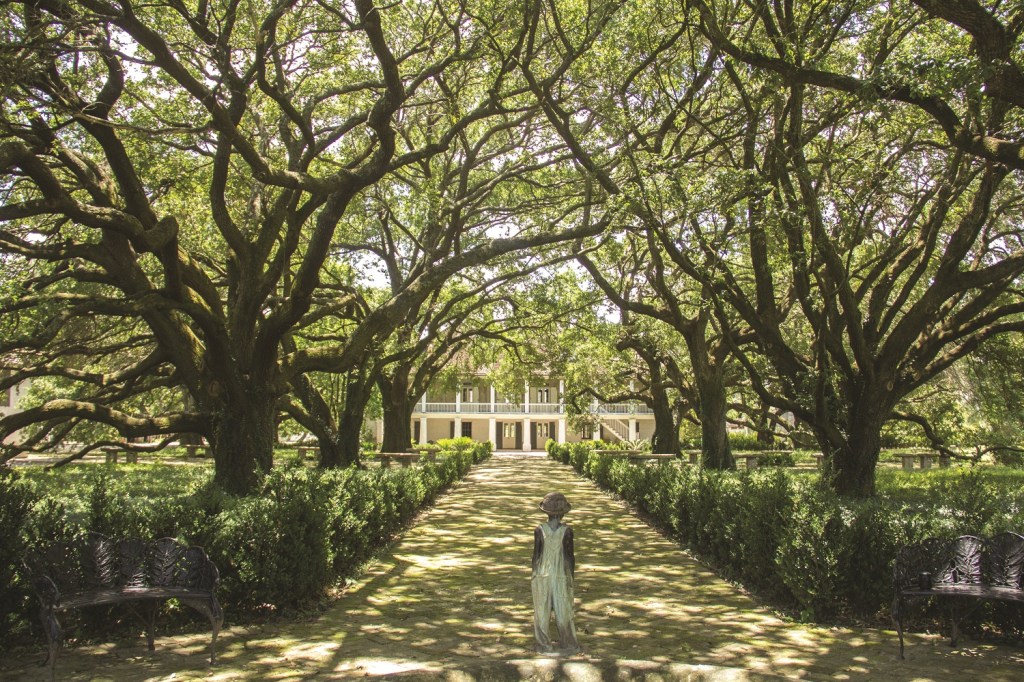
This article originally appeared in the November/December 2021 issue of Museum magazine, a benefit of AAM membership.
The Whitney Plantation Museum confronts the truth of its history in all facets of its operations.
In the weeks before Whitney Plantation opened to the public in 2014, the grounds quiet and still while we mapped out where furniture would be placed in the 18th-century Big House, I had a persistent, nagging thought: What if nobody comes?
I was well familiar with plantation museums. Growing up in North Carolina, the daughter of a public historian, plantations were a regular part of my extracurricular education. Nothing in North Carolina, however, compares to the massive industry around plantation tourism that exists on Louisiana’s River Road. While many sites remained steadfastly dedicated to lifting up the stories of plantation owners, Whitney Plantation was established as a site of memory to honor the lives of enslaved people.
If visitors coming to Whitney expect a “normal” plantation tour, I thought, what happens when they get a tour about slavery? What if there is no audience for this history? Worse, what if people get angry and combative?
My fears about an empty house started to change when we opened our gates on December 7, 2014, to a crowd of 750 people. A slow start in the early weeks of 2015 ended when the New York Times Magazine published an eight-page profile of Whitney Plantation’s founder, John Cummings, three months after we opened. Overnight, our visitation tripled.
The next few years of running the museum were a frantic blur of trying to keep up with demand. Since then, our problem has never been a lack of interest. But curiously, I see my latent fear pop up over and over again in visitors, journalists, public historians, and academics. They ask me in almost the exact same language, every time: “Do you ever get pushback?”
When people ask me this, I sometimes sense that they are craving stories of clueless visitors angrily fretting that what Whitney says is not real history. I think, even if they don’t realize it, many people ask because they want to feel superior. Safe and secure in knowing that they understand the truth about our nation’s history, they can scoff and gawk at people who have been swindled by Lost Cause narratives and Gone with the Wind.
In 2019, a Washington Post essay that cherry-picked the most alarmist Tripadvisor reviews of a few plantation sites went viral, and it fed on the online outrage machine. Look at these people who don’t understand that plantations had slavery! Other journalists, as well as colleagues and friends, called me up with an almost gleeful need to gossip about these deranged visitors that they thought were crowding my site. I disappointed them every time when I told them that the vast majority of people who come to Whitney are not shocked that slavery existed. They want to hear these stories. They want to learn. The overwhelming response I hear is gratitude.

I understand that historical interpretation is an inherently political process, and preserving the stories of marginalized people can be dangerous and fraught. Museums and monuments that preserve Black history have often been targets for vandalism. In the Deep South, terrorism against Black people and Black institutions remains a fact of life. People’s expectations that Whitney Plantation would be a target of hatred are by no means unfounded.
At the same time, there is a tremendous hunger in this country to hear the truth, particularly among younger visitors. Many young people are not persuaded by the same narratives that plantation museums perpetuated for decades. If I sometimes hear a desire for gossip in peoples’ interest in our visitors, I also sense, among colleagues, a certain trepidation about delving into history the way we do. They worry about what visitors will think, how donors or the board will react, or how they will get staff buy-in.
If what I’ve seen over the past seven years at Whitney is any indication, we needn’t be worried about going too far. We should be worried about not going far enough.
Connecting Present to Past
Whitney Plantation opened a few months after Michael Brown was murdered in Ferguson, Missouri. Our visitors, very obviously, had Black Lives Matter protests at the top of their minds in those early months—as they would dozens of other times, whenever there were major Black Lives Matter protests or as the political climate changed.
On our reflection wall in the visitor center, we have collected thousands of notes about everything from the deeply personal, such as family stories, to the political. Visitors write that Black Lives Matter. They talk about the prison system. Now, our visitors are enraged about the laws that ban teaching critical race theory.
It is worth noting that none of these topics are covered on the tour and that visitors most often write after their tour is complete. It is very clear to us that whether or not we engage with the history that is unfolding around us, our visitors are taking what they learn on the tour and making connections to the present.
Whitney Plantation is far from the only site that has the answers to why the United States still struggles with racism, white supremacy, and inequality. We at Whitney, and our colleagues around the country, must answer those questions directly.

Living Our Mission
Our organizational practices are just as important, in many ways, as our interpretive practices. We think hard about what our dedication to our mission means for our behind-the-scenes work. Our audience, too, is very concerned with our ethics. One of the most common questions we get is, “Where does the money go?”
Money is a difficult issue on a site of stolen labor. What is morally or ethically right, given our unique history, takes on extra importance. Whitney Plantation is a 501(c)(3) with a majority-Black staff and board, and descendants of people once enslaved at the plantation work at all levels of our staff. Because enslaved people and their descendants were never paid for their work on this site, we do not use volunteer labor or unpaid interns.
We are conscious, too, of what we sell in the gift shop. We do not sell anything that is made outside of the United States unless it is certified fair trade. We prefer union-made products and products from Black-owned businesses and companies that support environmental and charitable causes. Most recently, we removed all non-fair-trade chocolate from the shop because of its connection to slave labor in Africa.
Many visitors don’t know about these practices, and especially given our well-known white founder, they are worried that the money they pay at the gate to hear about slavery on a plantation only makes a white man wealthier. We are not merely reacting to visitor concerns in our operational practices that address these issues; this is who we are, and it is baked into our mission, vision, and strategic plan. We are aware that we will always be under justifiable scrutiny, and it is our responsibility to live up to our mission as best we can in ways that people will not always see.
Addressing the Harm
Whitney Plantation certainly has its own unique set of challenges and opportunities, but there are lessons to be learned for all museums. Most museums must wrestle with what I see as two levels of harm: the historical harm and the institutional harm.
The historical harm is the trauma that occurred on the site or the harm that the museum interprets. Most museums interpret some form of historical trauma. Whether it is a plantation museum interpreting slavery, an art museum that displays looted artifacts, or a major history center with exhibits about colonialism and wars against Indigenous people, most museums have a story to tell about human suffering.
Institutional harm, by contrast, is the harm inflicted by the museum itself. Many museums have not adequately dealt with their own institutional histories. This type of harm might include a museum that was segregated, a museum that has not appropriately repatriated ancestors in compliance with the Native American Graves Protection and Repatriation Act, or a museum that has engaged in discriminatory employment practices.
At Whitney Plantation, our historical harm encompasses the more than 200-year period that the plantation operated—from 1752 until 1975—during which Africans and their descendants were enslaved and worked in debt peonage. We are a young museum, and so we have a lighter institutional footprint. To minimize our institutional harm, we must constantly remain nimble and self-aware; we have to reevaluate our practices and shine a harsh internal light to root out issues of bias and inequity.
Most importantly, we—and I speak here both of Whitney Plantation and the field more broadly—should not operate under the assumption that we will always get it right. Doing good work is a process, not a destination. Just because Whitney Plantation takes a more inclusive approach does not give us a free pass. We have not always, and we will not always, “get it right.”
Doing the internal work around identity and bias, especially on a site of such enormous historical trauma, will always be hard and sometimes painful. But it can also be joyous. We have an incredible opportunity not just for our own personal growth as a staff and board, but to provide a space of healing for the people who come to us. One visitor’s note that will always stay with me, and that guides me when things get very hard, said simply: “Now I can cry without shame.”







